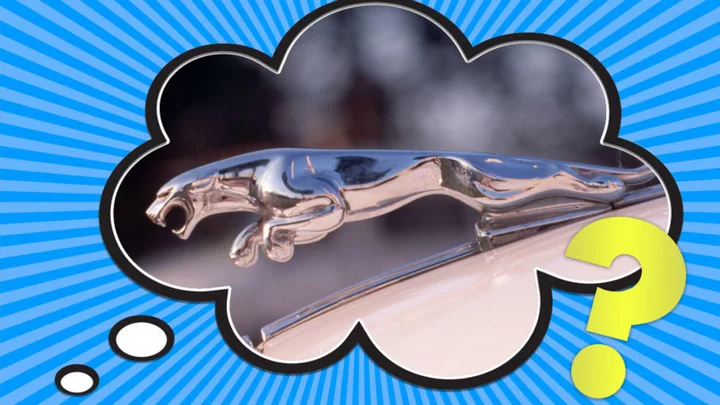
Why Don’t Cars Have Hood Ornaments Anymore?
Cars used to sport exquisite pieces of art on their hoods. What happened?
2023-09-27 21:22
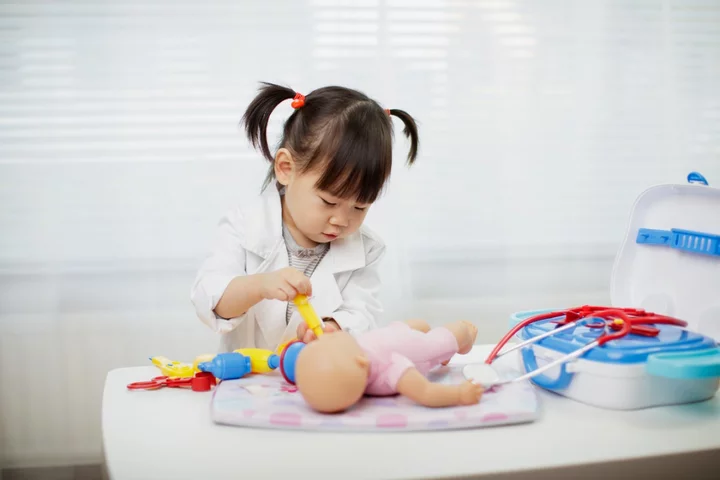
Toys children play with can have an effect on their success in adulthood
The type of toys children play with can have a profound effect on their success in adult life, according to an academic report. Dr Jacqueline Harding, a child behavioural expert, said repetitive childhood play can provide a long-lasting memory imprint and have the potential to subconsciously steer their career path. And they can help develop and deepen problem-solving abilities and improve imagination and creativity. Dr Harding explained how joy in early life from playing with toys can become a strong driver in later life decisions. It follows research of 1,000 parents of 0-7 year olds, which found 75 per cent buy toys they hope will contribute towards their child’s future success. More than half (51 per cent) deem their child’s playthings very important to develop their critical skills, crucial for everyday life. The study was commissioned by Mattel, creators of Thomas & Friends, which has released a white paper from King’s College London revealing the social and cognitive benefits of train play for children. Dr Jacqueline Harding said: “Favourite toys tend to be played with almost every day and it is this repetitive act that can leave an imprint on the young developing brain. “So, it almost goes without saying that the playthings young children engage with on a regular basis can have a long-term effect and may even subconsciously steer them in a particular career direction. “Of course, this is hard to prove beyond doubt as there are so many other factors involved - but taking toys seriously is a good idea as children spend so much time engaging with them, and choosing wisely according to their individual interests can pay real dividends.” The biggest benefit parents believe children get from toys when it comes to improving critical skills is the improvement in their fine motor skills (68 per cent). Almost as many (67 per cent) said it was how toys drive imagination and creativity, while 63 per cent think toys can help with problem-solving skills. While 86 per cent went as far as saying they think toys can have a large or moderate impact on improving a child’s chances of a successful career, in the future. But when it comes to actually choosing toys for their children, the top priority is that it they are age-appropriate (59 per cent). Others want to ensure the toy is safe (55 per cent) or more than its perceived educational value (47 per cent). It also emerged 58 per cent have particular brands or toy lines they turn specifically for their developmental value. But 21 per cent fear their little ones don’t play with educational toys as much as they’d like, according to the OnePoll.com data. Dr Harding added: “One astounding insight is that at two years of age children engage in the same level of mental work as adults whilst engaged in imaginative play. “It is well established that imaginary play and creative pursuits offer up a wealth of surprising benefits that have exciting biological and neurological benefits for children and adults. “During childhood, the brain is known to be particularly absorbent – this is known as ‘neuroplasticity’. “In other words, it is easier to learn aspects of life – so not only does play yield a significant benefit during childhood itself but also in later adult life.” It comes after a separate white paper by Dr Salim Hashmi, a researcher from King’s College, reviewed more than 1,600 scientific research papers to explore the advantages of playing with toy trains. One of the primary benefits Dr Hashmi identified was children who play with toy trains can develop better thinking and social skills, allowing them to learn and practice collaboration, cooperation, and social understanding while interacting with others. His study also highlighted how playing with toy trains allows children to develop and refine essential thinking skills, contributing to their problem-solving abilities. Talking about his research for Thomas & Friends, Dr Hashmi said: “Constructing tracks, arranging train cars, envisioning scenarios, and enacting them during train play can stimulate cognitive development and enhance critical thinking, spatial analysis, and decision-making skills. “Collaborative play with toy trains could help encourage teamwork, negotiation, and collaboration, as children share resources, ideas, and play together. “Additionally, playing with toy trains provides children with opportunities to develop and practice problem-solving abilities. “Overall, train play, is an excellent way for children to develop key skills.” Top tips on choosing a toy for your child: 1. Take time to watch your child playing and try to get ‘into their thinking’ – what appears to light up their brain? 2. Guide children towards toys and play experiences that meet the need for them at their stage of development. 3. Be aware of the types of play that can aid them in their future – toys that help them begin to connect with others (when they are developmentally ready and able to do so). 4. Play with your child in a way that does not take over but allows them agency - a little control. 5. At other times, sit back and allow your child space to think while they play - being mindful that in their brain so much is taking place. 6. Talk to your child in ways that they can understand about what they are doing while they play – just gentle questions not an inquisition. Children often wish to share with adults what they have achieved or what matters to them while they play. 7. Allow your child time to explain what they are doing. Younger children will perhaps just show you rather than talk about it while older children might wish to discuss how they solved a problem or found a solution while they played. 8. Help children begin to collaborate with others while they play. Sometimes this may just involve keeping a watchful eye and ensuring a fair distribution of resources, so conflicts are avoided. 9. Relish play and be respectful of the power it yields in terms of a child’s mental health and general wellbeing. 10. Guide children towards toys and play experiences that are inclusive and not gender specific. Read More Study finds free childcare reform has ‘little benefit’ to poorer families Couples delay getting married in order to buy new home Most children in kinship care living with at least one grandparent, figures show Sophie Turner and Joe Jonas reach agreement after child custody row Comedian Ashley Blaker on why he wants to ‘change the conversation’ around children with special needs Brian Austin Green gets candid about co-parenting with Megan Fox
2023-09-27 20:48

Summer of female sporting events inspires millions of women to get back into the game
A bumper summer of female sporting events has inspired millions of women to get back into sports after years of fear and judgement. Encouraged by competitions such as the FIFA Women’s World Cup, the Women’s Ashes and Wimbledon, 59 per cent of women have started training with an old sports team again. A poll of 2,000 females aged 18-65 found 46 per cent feel motivated to try sport after seeing the empowerment and determination showed by these professional female sporting stars. It also emerged 31 per cent of women over 45 played sports when they were younger but dropped out as a teenager, with being ‘too sweaty’ and not feeling ‘good enough’ to take part among the top reasons. But now, many are dusting off their boots, digging out their racquets and getting back to action. Sure UK, a supporter of women’s sports, commissioned the research after launching the Breaking Limits: Girls Can Football Series, which aims to provide funding and training to give young people access to sport coaches, communities and safe spaces. Former Lionesses goalkeeper Carly Telford, who is partnering on the campaign, said: “Too many women have missed out on years of enjoyment, fitness and socialising due to feeling unable to continue with team sports and it’s about time they feel inspired to get back into the sports they enjoy without fear. “There’s still a long way to go and so much more that we need to do to promote women’s sport in all corners of the world. “To normalise women succeeding on pitches, courts and fields should be everyone’s goal, and both consumers and organisations have roles to play to make this a reality.” The study found there is more to do though, with 77 per cent of women believing that society needs to promote female sporting role models. While 36 per cent worried about being treated differently to men if they were to participate in sports, leaving 64 per cent put off trying sports altogether as a result. But putting worries aside, the future of women in sport looks bright, with the most popular sports they’d like to be involved in named as football (37 per cent), netball (21 per cent) and athletics (15 per cent). A quarter voted netball as the most inclusive sport for women, followed by athletics (15 per cent), and football (15 per cent). And half believe women’s football will eventually be as popular as men’s football – if not more. For 74 per cent, playing as part of a team has worked wonders for their mental health, while 51 per cent said sports has had a positive influence on their life overall. As 46 per cent of those polled, via OnePoll, feel motivated to try a sport after seeing the empowerment and determination showed by the sporting stars. ‘Movement has the power to transform lives’ Alice Duffill, from Sure UK&I, said: “Movement has the power to transform lives. “Everyone should be able to experience all the incredible physical, mental and social benefits movement bring - whoever you are, however you move. “But in our increasingly unequal societies, social, economic, and physical barriers stand in the way. “Inspiring women and girls to play sport through promoting and raising awareness professional athletes who look like them is key in breaking down some of those barriers. “That’s why we’re committed to growing women’s sports as we know the importance of shining a light on professional women athletes to help inspire today’s and tomorrow’s girls”. Read More Study links ultra-processed food and drink to risk of depression in women Study finds women only give themselves 30 minutes of self-care a week Women respond to viral TikTok prompt asking about ‘female version’ of male Roman Empire obsession The cure for smelly garlic breath? Turns out, it’s simpler than you think Teenager’s death after drinking too much water was ‘preventable’ Could bats hold the secret to beating Covid and cancer?
2023-09-27 20:25
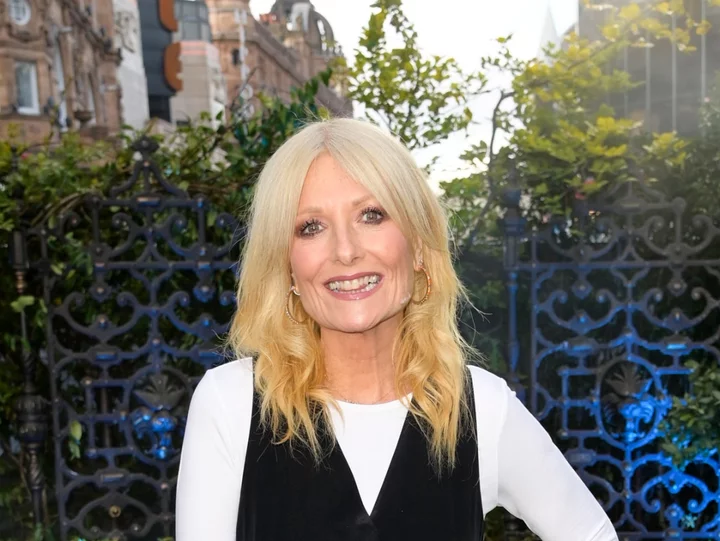
Gaby Roslin says she’ll ‘never apologise’ for saying she’s happy post-divorce
TV presenter Gaby Roslin has said she will “never apologise” for telling people she’s happy, after she experienced moments of grief following her divorce. The former The Big Breakfast presenter and author, 59, was married to musician Colin Peel for almost a decade. They share a daughter together. “Not all my life has been joyful. My mum died young. I’ve been through divorce and lost some of my dearest friends,” she told Prima magazine. “You go through those things and you realise that life is precious and, without sounding trite, I will never apologise for saying I’m happy.” Roslin’s mother died just over 20 years ago, around the time she was beginning a new job. The TV star said that it feels like she and her husband of 18 years, David Osman, “fit together”. She shares another daughter with Osman. “We still really appreciate what we have,” Roslin, who presents a show on BBC Radio London along with sints on BBC Radio 2’s The Zoe Ball Breakfast Show and BBC One’s Morning Live, said. “The things that makes it work is that we’re not in competition with each other: We’re very, very different.” Speaking about how “life is crappy for a lot of people”, she added: “I’m someone who has always been very positive and full of laughter, but I’m aware that it’s not something everyone can hold on to. “There are coping mechanisms that have helped me, and I know they can help others, too.” Roslin revealed that some of her personal coping mechanisms have included giving up alcohol five years ago, and going for walks. “There’s a lot of ageism out there,” she said. “It’s no secret in my industry, but it’s everywhere. You can’t do this or that if you’re a certain age. No! I’m lucky that I’ve carried on working, but I have friends who have experienced it. “I know an actor who, at 55, was going for the part of someone older than her and was told that she was too old. They cast a 40-year-old. That’s so wrong.” Roslin is preparing to release her new guided journal, Spread The Joy: Simple Practical Ways To Make Your Everyday Life Brighter, which focuses on stories, illustrations, anecdotes and tips and tricks. The full interview is available now in Prima’s November issue in supermarkets and online at Mags Direct. Additional reporting by Press Association. Read More Sophie Turner and Joe Jonas reach agreement after child custody row Who is Laura Gallacher, Russell Brand’s wife of six years? Everything we know about Katy Perry and Russell Brand’s short-lived marriage Why is my teenager sleeping so much? Sounds that can help you fall asleep better Holidays to the homeland could help children hold onto family’s original language
2023-09-27 18:16

'We were raised on Elvis': Priscilla star Cailee Spaeny on The King's influence
'Priscilla' actress Cailee Spaeny had the story of Elvis Presley in her blood from a young age as her mother loved the music icon.
2023-09-27 17:16

Why is my teenager sleeping so much?
When you think about it, teenagers are a lot like pandas. Like the black and white bears, teens often have a tendency to lounge around for hours, munch their way through massive amounts of grub, and snooze for extremely long stretches. It’s not unusual for youngsters to emerge zombie-like from their bedrooms hours after parents and little ones have arisen on weekend mornings, or have a ‘disco nap’ in the afternoon. But how can you tell if your child’s sleeping habits or typical for a teen – or a cause for concern? How much do teens need? “Sleep research suggests that a teenager needs between eight and 10 hours of sleep every night, so slightly more than an adult or younger child requires,” says Dr Hana Patel, sleep expert at Time4Sleep. “This is because teenagers need additional sleep to support their rapid physical, intellectual, and emotional development.” Chris Tattersall, sleep expert and MD of Woolroom explains: “They are going through a second developmental stage of cognitive maturation. Additional sleep supports their developing brain, as well as physical growth spurts.” However, it’s estimated that most adolescents in the digital age only get about 6.5 to 7.5 hours sleep. Tattersall says: “With the increased use of social media scrolling before bedtime, this is affecting thousands of teenagers’ sleep because the blue light from screens suppresses melatonin levels and delays sleepiness.” What happens if they don’t get enough sleep? “Teenagers not getting enough sleep can lead to all sorts of potential issues,” says Tattersall. Psychological symptoms may include, he warns: “Depression, difficulty concentrating, memory loss, anxiety and low self-esteem.” Plus, there’s the risk of weight gain due to eating more sugary foods to combat tiredness. “Not only does it have negative effects on their general wellbeing but it can also affect their academic performance,” Patel adds. Is it possible to sleep too much? It may seem counterintuitive, but sleeping too much can actually make young people more tired. “Anything over eight to 10 hours of sleep for teens could be considered excessive and may cause daytime sleepiness,” says Patel. “This can negatively affect interpersonal relationships, extracurricular activities, general health and, for older teens, driving too.” It’s important for parents to watch for signs that teens are struggling with sleep. “Look out for concentration difficulties, shortened attention span, memory impairment and lack of enthusiasm or energy,” Tattersall says. “You also might notice moodiness and aggression, poor decision-making, and signs of depression.” Patel says: “Sometimes teens may also complain of symptoms like headaches and migraines.” Try to encourage good ‘sleep hygiene’ in terms of a youngster’s evening routine, meaning avoiding large meals and caffeine before bed and creating a relaxing bedroom environment. “If possible, reduce the use of devices like smartphones and tablets, TVs or computers in the bedroom at night, as the light from the screens interfere with sleep,” Patel says. “If you are concerned about your teenager’s sleeping habits and the effects of this on their health, consult with your GP.” Read More Charity boss speaks out over ‘traumatic’ encounter with royal aide Ukraine war’s heaviest fight rages in east - follow live Kate gives a lesson in autumnal power dressing in a green trouser suit How can I boost my soil when I go peat-free? See Cate Blanchett champion sustainable fashion at glamorous Giorgio Armani show
2023-09-27 16:26
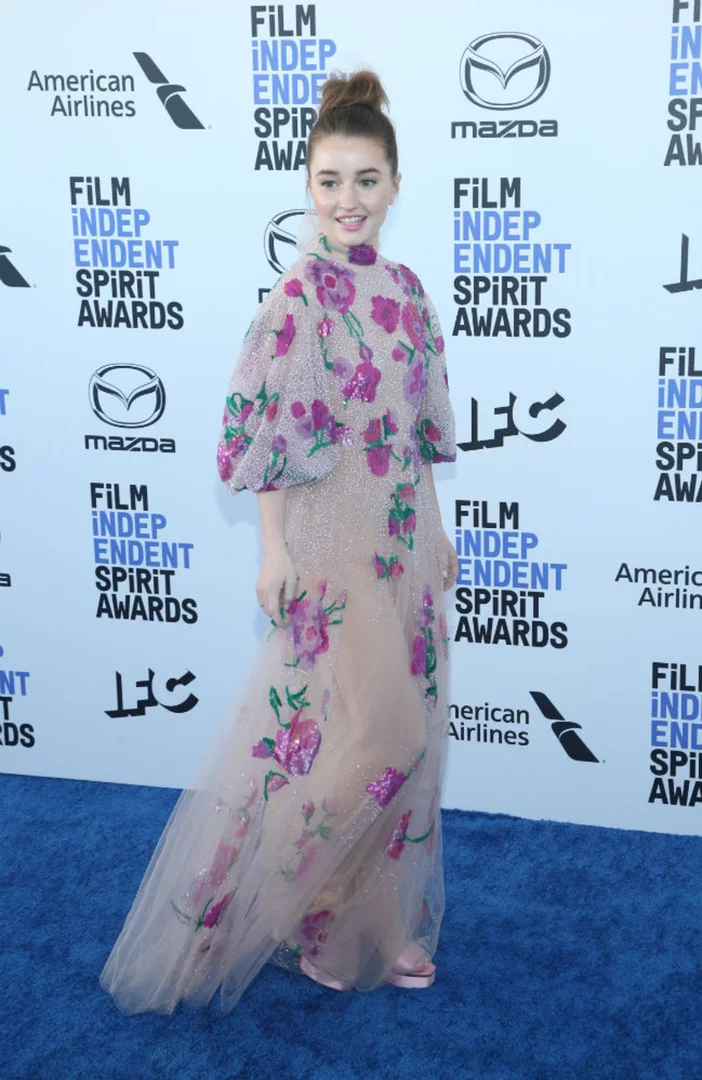
'If enough people watched it on Hulu and everyone's begging for it, we'll talk': Kaitlyn Dever horror No One Will Save You sequel not ruled out
'No One Will Save You' director Brian Duffield has admitted it would take a lot of hype for him to consider a sequel.
2023-09-27 15:24

Victoria’s Secret was never feminist – why are they bothering to try now?
Wings! Fake tans! Low body mass indexes! For millennial women, the Victoria’s Secret Fashion Show was an annual reminder of the myriad ways in which we were failing to adhere to exacting and exhausting beauty standards. When it was cancelled in 2019, few mourned it. But fashion loves a comeback story, and today the company unveiled Victoria’s Secret: The Tour ’23 on Amazon Prime Video, its first televised catwalk event in five years. According to the company, the feature-length film is the “ultimate expression” of their ongoing efforts to rehabilitate a brand that has been mired in scandal. Alongside long-standing criticisms over promoting an unrealistic body image, the company’s former marketing executive Ed Razek was also accused of behaving inappropriately with models in a New York Times report (he described the allegations as “categorically untrue, misconstrued or taken out of context”) and a recent Hulu documentary Angels and Demons explored troubling links with convicted sex offender Jeffrey Epstein. “Visually, strategically, everything about it is the incarnation of where the brand is going,” Victoria’s Secret president Greg Unis has said. Instead of the usual structure, which was centred around a straightforward runway show, The Tour ’23 is roughly divided into quarters, each focusing on one of four locations: Lagos, Nigeria; Bogota, Colombia; Tokyo, Japan; London, the UK. In each city, a local designer has dreamed up their own fashion collection to be modelled by the likes of Naomi Campbell, Emily Ratajkowski, Adut Akech, and Gigi Hadid, who does double duty as the show’s narrator. In London, the chosen designer is Michaela Stark, whose corsets aim to celebrate a diverse range of body shapes, rather than constrict them. She agreed to take part in the VS show 2.0, she suggests, so that she could counteract the damaging messages put out by the original runways. “It was a big thing” when she was a teenager, she recalls, “but it was also that culture around it, of not wanting to eat after you saw it”. Her comments inadvertently raise a question that looms over the whole production: can you ever truly detoxify a brand practically built on the insecurities of a generation of women? Founded by Roy Raymond in the late Seventies, who felt awkward buying lingerie for his wife in his local department store, Victoria’s Secret began life as a women’s underwear shop aimed specifically at men. In 1982, Raymond sold the business to Limited Stores founder Les Wexner for $1m; Wexner went on to transform the brand, envisaging it as a more affordable version of the fancy European label La Perla. In 1995, when the company was facing competition from Wonderbra, the first Victoria’s Secret Fashion Show took place at the Plaza Hotel in New York City. It proved successful enough to become an annual event. In 1999, the show was streamed on the internet for the first time, prompting the website to crash as 1.5 million users tried to tune in. Two years later, the VS show celebrated its inaugural TV broadcast, during which the National Organisation for Women (NOW) protested outside a New York branch of the shop. “Some people are terribly blase about this, that this is not a big deal, that we ought to be used to this kind of daily sexuality,” Sonia Ossorio, NOW’s vice president for public information, said at the time. “But I think we need to keep questioning the ever-extending sexualisation of women in mass media.” The following year, NOW branded the event a “softcore porn infomercial”. By then, the blueprint for future VS shows had been set. A lineup of models would don bras encrusted with millions of pounds worth of jewels and embarrassingly themed lingerie (never forget Cara Delevingne’s god-awful outfit circa 2013: a sort of miniature shell suit likely pitched in the boardroom as “sexy football fan”). Somewhere between the models, a famous singer would pop in for a brief performance; if they were a woman, they’d be decked out in a VS creation of their own (Taylor Swift got a particularly raw deal in 2013, too, when she had to wear a Union Jack-inspired number, complete with a tiny red, white and blue top hat). This glittering, over-the-top spectacle, much closer to a beauty pageant than a Fashion Week presentation, spotlighted the world’s most beautiful women – who were not just genetically blessed but worked hard, too, we were told ad nauseam. They had been preparing for the show like endurance athletes, sticking to carefully tailored diets and intense workout schedules. These wing-wearing “Angels” were selling a dream, one that we lesser mortals could supposedly buy into by picking up some synthetic underwear at our nearest Victoria’s Secret branch. But it was their painstaking fitness regimens, not the pants they were wearing, that were the real focus of fascination. In endless interviews, the models were asked to detail exactly how they whittled themselves down to “Victoria’s Secret ready” size – so that we could try and copy them. To combat the criticisms of objectification, the brand relied on its models to pay lip service to just how “empowering” the whole circus was, offering up their take on choice feminism. “There’s something really powerful about a woman who owns her sexuality and is in charge” – model Karlie Kloss was peddling this line to the media as late as 2018. “A show like this celebrates that and allows all of us to be the best versions of ourselves. Whether it’s wearing heels, make-up or a beautiful piece of lingerie – if you are in control and empowered by yourself, it’s sexy.” Naturally, it was very convenient that this “best version of ourselves” aligned with the oppressively narrow conventional standard of sexiness Victoria’s Secret was selling. By the late 2010s, though, as the fashion industry began to (slowly) address its diversity problem, Victoria’s Secret started to seem more and more like an anachronism. As other brands took small steps to spotlight plus-size models on their catwalks and in their advertising campaigns, the VS show remained the preserve of the extremely thin. They had been preparing for the show like endurance athletes, sticking to carefully tailored diets and intense workout schedules Placing white models in culturally insensitive outfits (see: Kloss walking down the runway wearing a Native American-inspired headdress) only added to the glaring PR problem, which was later exacerbated when the brand’s marketing boss Ed Razek made controversial comments about transgender people and plus-size models to Vogue in 2018. “It’s like, why doesn’t your show do this? Shouldn’t you have transsexuals in your show?” he said, apparently recalling questions from critics. “No. No, I don’t think we should. Well, why not? Because the show is a fantasy.” Elsewhere, he claimed “no one had any interest” in seeing bigger bodies on the VS catwalk. Razek later apologised, admitting that his “remark regarding the inclusion of transgender models in the Victoria’s Secret Fashion Show came across as insensitive”. His comments about plus-size bodies went unaddressed. In 2019, against a backdrop of plummeting TV ratings and declining sales, the brand confirmed that the VS show had been cancelled; instead, they said, the company would focus on “evolving” their marketing. The news came just a few months after the revelation that Jeffrey Epstein had provided financial advice to Victoria’s Secret founder Wexner – and had exploited his personal connection to the brand as a means to lure in young women. “Being taken advantage of by someone who was so sick, so cunning, so depraved, is something that I’m embarrassed I was even close to,” Wexner said to investors. “But that is in the past.” He left the company the following year. Since then, Victoria’s Secret has made some high-profile attempts to rectify past missteps. The company brought in a majority female board of directors; they ditched the “Angels” concept in favour of the new “VS Collective” whose ranks include actor Priyanka Chopra, US football star Megan Rapinoe, and plus-size model Paloma Elsesser. Last year, an ad campaign featuring a more diverse array of women was accompanied by the slogan “we’ve changed” – supposedly into something “ever-evolving” and “real”. How much has Victoria’s Secret “changed”, really? The latest show features a handful of plus-size models, Elsesser included, but many of the old VS cohort are present and correct, including Candice Swanepoel, Lily Aldridge, and Adriana Lima. The nods to body diversity can’t help but feel a bit cursory when the overriding vision is still one of impossibly thin women parading up and down a runway – albeit a runway that now snakes around a Brutalist building in Barcelona as opposed to a swanky New York City hotel. The outfits too, are more arty, less skimpy this time around and mercifully there hasn’t been the usual media battery of stories on extreme exercise and diet in the run-up – but that doesn’t mean those practices have ended altogether. “We haven’t forgotten our past, but we’re also speaking to the present,” the brand’s chief creative director Raul Martinez said before the film’s launch. In an era when more inclusive, dynamic lingerie labels, like Rihanna’s Savage x Fenty, reign supreme, the VS show can’t help but seem like a relic. And as long as its legacy of impossible body standards lives on for many of us, any attempts to dress the spectacle up as empowering feel very hollow indeed. Read More Naomi Campbell and Gigi Hadid lead first Victoria’s Secret runway show in five years Victoria's Secret overhauls its racy fashion catwalk in its latest moves to be more inclusive Chioma Nnadi at Vogue: All hail the era of the Black female fashion editor Naomi Campbell and Gigi Hadid lead first Victoria’s Secret runway show in five years Kim Kardashian debuts buzz cut and thin eyebrows for new photo shoot Travis Kelce wears ‘1989’ inspired outfit after leaving NFL game with Taylor Swift
2023-09-27 13:45

Consulting firm McKinsey to pay $230 million in latest US opioid settlements
By Nate Raymond (Reuters) -Consulting firm McKinsey & Co has agreed to pay $230 million to resolve lawsuits by hundreds
2023-09-27 09:51

US judge overturns Eli Lilly's $176.5 million loss in Teva patent case
By Blake Brittain Drugmaker Eli Lilly convinced a federal judge in Massachusetts on Tuesday to overturn a $176.5
2023-09-27 05:24
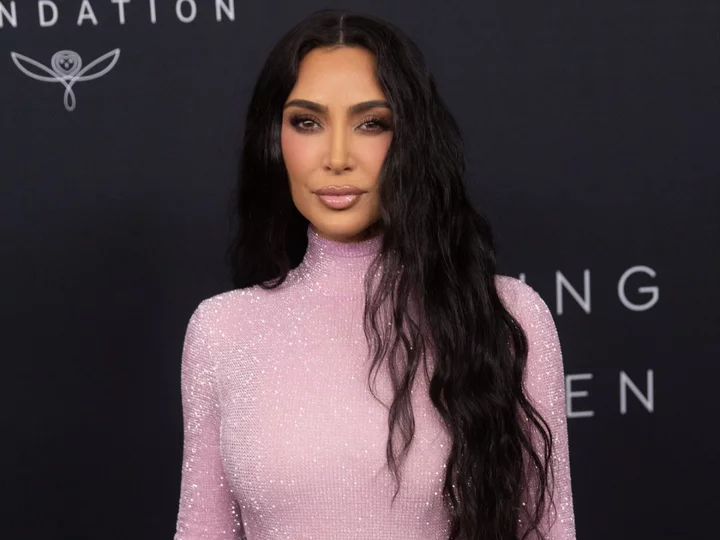
Kim Kardashian debuts buzz cut and thin eyebrows for new photo shoot: ‘Iconic’
From finely cut bangs to platinum tresses, Kim Kardashian isn’t anything if not daring when it comes to experimenting with her hair. The 42-year-old style muse may have just pulled off her most jaw-dropping transformation yet as she posed for the CR Fashion Book 2023 cover with a buzzed head and thinly arched brows. Creative director Youssef Marquis reimagined Kardashian’s long dark locks more frayed and short-ended. The reality star’s predictable sleek, fine appearance was replaced by a rugged and bare style, juxtaposing the very image Kardashian has created for herself. In the photo shoot, Kardashian can be seen stripped of colour and accessories, with only her barely-there brows and almost gone head of hair giving her a bit of edge. Smears of dirt wrapped the lauded A-lister’s arms, chest, and white tank top. Other images displayed the businesswoman with angeled readers, a thick stroke of black eyeshadow under her waterline, a C-cut of makeup drooping down her cheek to the edge of her mouth, and dangling a cigarette by her teeth as she focused on a camera ahead. Her clothing switched from a fitted tank to an oversized sweater and a thin button-down jumper. In the world of CR, Kardashian is both the spectacle and the seer. A soft shimmery gloss coated her eyelids as the only apparent makeup on her face. The cover said, “Kim Kardashian by Nadia Lee Cohen.” On social media, the new look has proven to be a hit among Kardashian’s fans. “Umm, this is iconic,” one fan wrote in the comments under Kardashian’s Instagram post, while another said: “Sooo cool, I love this look on you.” The Skims founder also reflected on her first encounter with the magazine’s Editor-in-Chief, Carine Roitfeld. “I had always heard you were the most stylish person on the planet, and I had your books at my house. We met when I was pregnant with North, and you asked to do my first fashion cover,” she remarked. “I was freaking out. Karl [Lagerfeld] shot it, Riccardo [Tisci] art directed it, and you styled it. I was so nervous and so excited all at the same time.” Kardashian allowed her cover feature for CR Fashion Book to play out exactly as the team had envisioned. “I show up on set and the makeup artist only had two products,” the entrepreneur confessed. “And I was low-key freaking out but obviously trusted your plan.” Labelled as “the muse of our generation,” the Skkn creator’s account on parenting, social justice, and internal reflection was analysed in her exclusive sit down with Roitfeld. “If there was a goddess who presided over social media, reality television, fashion, or entrepreneurship, Kim Kardashian could arguably hold any and all of those titles,” her feature read. The fashion fanatic first posed for the cover of CR with their Fall/Winter 2013 Issue 3. Here, her spirit was pictured differently. Kardashian’s fluffy eyebrows remained as they were, and her satiny straight hair stayed. Read More Kim Kardashian wears Chanel Barbie necklace in new Super Bowl ad with Usher Kim Kardashian makes her scripted TV debut in American Horror Story. Here’s how to watch and stream online Kim Kardashian faces backlash for posing in Balenciaga after condemning brand over child scandal Kim Kardashian wears Chanel Barbie necklace in new Super Bowl ad with Usher Caitlyn Jenner claims Kim Kardashian ‘calculated how to be famous’ in early career Kim Kardashian faces backlash for posing in Balenciaga a year after campaign scandal
2023-09-27 04:00

The Cannoli Incident: How One Capo in ‘The Godfather’ May Have Written Himself Out of the Sequel
“Leave the Gun, take the cannoli” was improvised by actor Richard Castellano. But a disagreement with director Francis Ford Coppola may have led to him being ousted from the sequel.
2023-09-27 03:16
